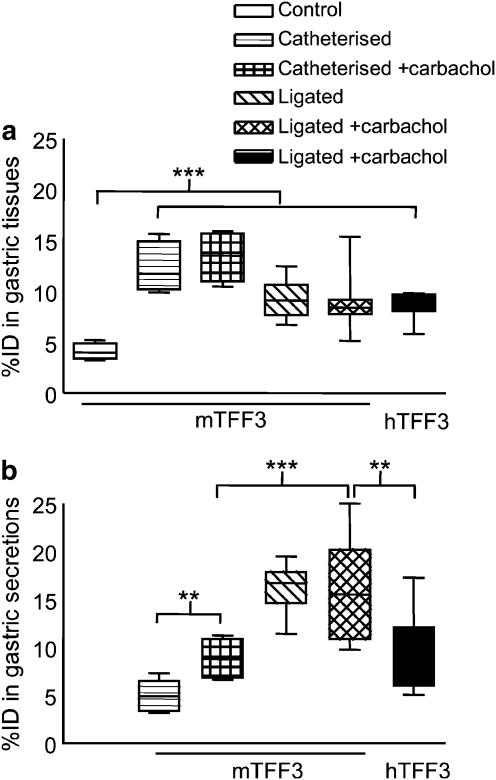Figure 1.
Distribution of 125I-TFF3 to the stomach and gastric secretions of mice. Values shown are the percentage of injected dose (% ID) in a box and whisker plot. 125I-mTFF3 or 125I-hTFF3 was injected i.v. into control mice (n=8), mice that had the stomach ligated (n=16) or catheterized (n=12). Half of the mice in the surgically manipulated groups received 3.5 μg kg−1 carbachol s.c. (+carbachol) and half received saline. Specimens were sampled 180 min after injection and the radioactivity measured. (a) In the gastric tissue, all manipulations resulted in significantly increased % ID as compared to control mice. (b) In the gastric secretions, a significantly higher % ID was found after ligation than after catheterization. Carbachol caused a significantly increased accumulation of 125I-mTFF3 in catheterized but not ligated mice. In both (a) and (b), the last two values compare the distribution of mouse and human peptide. Although the tissue binding was comparable, significantly more 125I-mTFF3 than 125I-hTFF3 was detected in the secretions. **P<0.01, ***P<0.0001.

